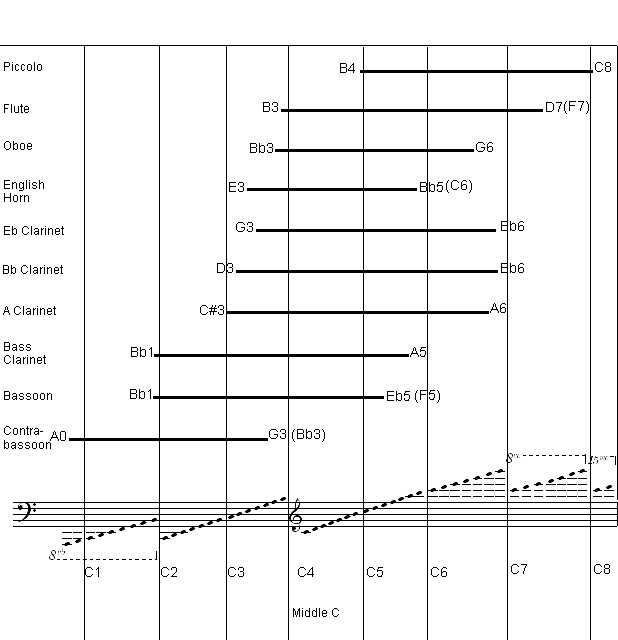Woodwinds

Don't get caught up in the idea of different woodwinds as a hierarchy. Woodwinds differ from strings in that the timbre of each instrument is remarkedly different. Don't make the mistake of only letting flute carry the melody because it's the highest.
- also consider mixing up the hierarchy (e.g Try an oboe tune above a low register flute)
The woodwind section as a whole is rich in overtones. If you’re clever with wide open chords, the harmonic gaps get filled in.
steer clear of dull chordal blocks and doubling. Endlessly held notes will bore your players and worse, waste an opportunity.
Woodwind instruments like to move, even when the music is slow.
Instruments
3rd and 6th intervals between woodwind instruments sound nice
Go for an energetic zippy high flute against a lazy mid-register oboe, Move the clarinet about within the gorgeous depths of its chalumeau register below a plaintive high legato bassoon. If you’re after rhythmic punch, ask for fortissimo staccato attacks. They’ll rival the brass section for power.
Flute
Flutes have difficulty playing loudly at bottom of their range.
Flutes get louder as they go higher
Oboe
Oboes get quiter as they go higher
Clarinet
Clarinets are often thought of as having 3 distinct registers: chalumeau, clarion, altissimo
The clarinet is capable of more extreme crescendi or diminuendi than any other wind instrument. It can purr like a cat or blast everything else out of the water.
Clarinets get louder as they go higher
Bassoons
Bassoon and oboe, an octave apart, are a match made in heaven. Make the most of the bassoon’s tenor register.
Bassoons have difficulty playing quietly at the bottom of their range
The bassoon is the quietest instrument in the entire orchestra.
- If you want a melody to cut through, write above middle C.